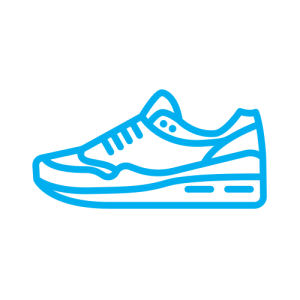Performance Enhancement
Performance enhancement is the foundation of every sport. When implemented correctly it will help develop a more powerful and agile athlete while also significantly reducing the risk of injury.
Mobility + Warm Up
Prior to a training session it is critical to prepare your body & mind for training. Athletes generally come straight from waking up, class, work etc. and enter into training without a plan to transition. This can be a major mistake that often leads to injury and is certainly a recipe for decreased performance. Our body must be prepared BEFORE we begin. A comprehensive mobility and warm-up program accomplishes this.
Mobility
Warm-up
Strength + Power
Strength and speed are among the most sought-after physical qualities in athletics. Many athletes and coaches have come to believe that strength and speed are independent athletic qualities and thus should be trained separate from each other. However, these two qualities are intimately related.
Strength is defined as the ability to produce force. According to Newton’s Third Law of Motion, for every action there is an equal and opposite reaction. As a result, the amount of force that an athlete is able to apply to the ground will determine how fast an athlete can run and how high they can jump. It is vertical force production that affects speed, not horizontal. Thus, speed is determined by strength.
Strength is the foundation of every good performance enhancement program.
8 Categories of Movement
SAMPLE PROGRAM
Conditioning
In order for an athlete to succeed in any sport they must have an elite level of conditioning. It takes time and a well-designed progressive program to prepare the athlete for competition. Realize that each sport requires a different type of conditioning based on the energy system being used. This can be determined by learning the work-to-rest of each sport.
Generally speaking a solid conditioning program must start 6-10 weeks prior to the season starting. Starting any earlier may take away from gains that could have been developed in the areas of strength & power.
Types of Conditioning
Speed + Agility
Speed & agility are critical components every athlete must possess. Many times in sport a fraction of second will determine the outcome of a game. The base of speed development is a solid strength training program with the goal of increasing force production. In addition, it is important to implement various types of speed drills that are conducive for each particular sport. The requirements of each sport are different. Prior to implementing a program be sure to analyze the requirements of the sport.
Speed training should be done at the beginning of a training session when the nervous system is fresh. A solid speed training program starts by teaching proper linear and lateral mechanics. When training speed ensure there is adequate rest between each drill (2-5 minutes). Each repetition must be performed at maximum speed.
Nutrition + Restoration
Nutrition and recovery tends to be the area where most athletes have the strongest potential for growth. When an athlete trains, muscle and the energy systems of the body are broken down. During training an athlete actually becomes weaker and slower. But through the recovery process the athlete recovers and becomes stronger, faster etc. Training is only one piece of the performance enhancement puzzle, nutrition and recovery are the others.
Nutrition & recovery does not have to be overly complex. A basic understanding that is implemented consistently over a period of time will produce incredible results. The key is a willingness to make changes and the dedication to see it through.
Nutrition
- Daily Intake Guide
- Grocery List
- Post Work Out
Restoration
- Epsom Salt Baths
- Cryotherapy (ice massage)
- Contrast Baths + Showers
- Massage






